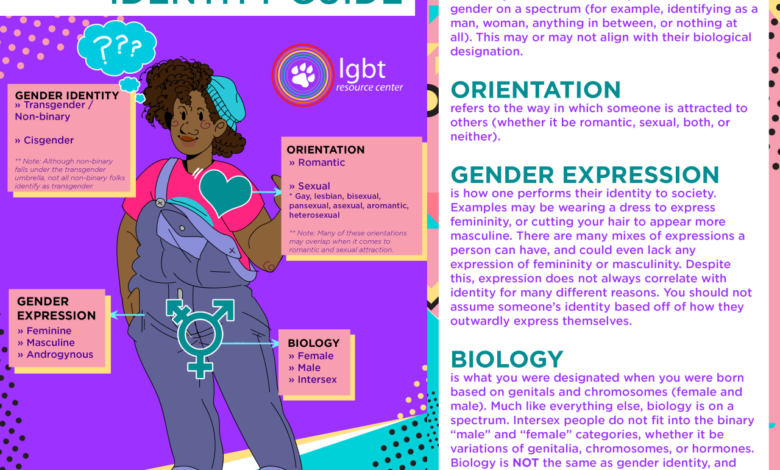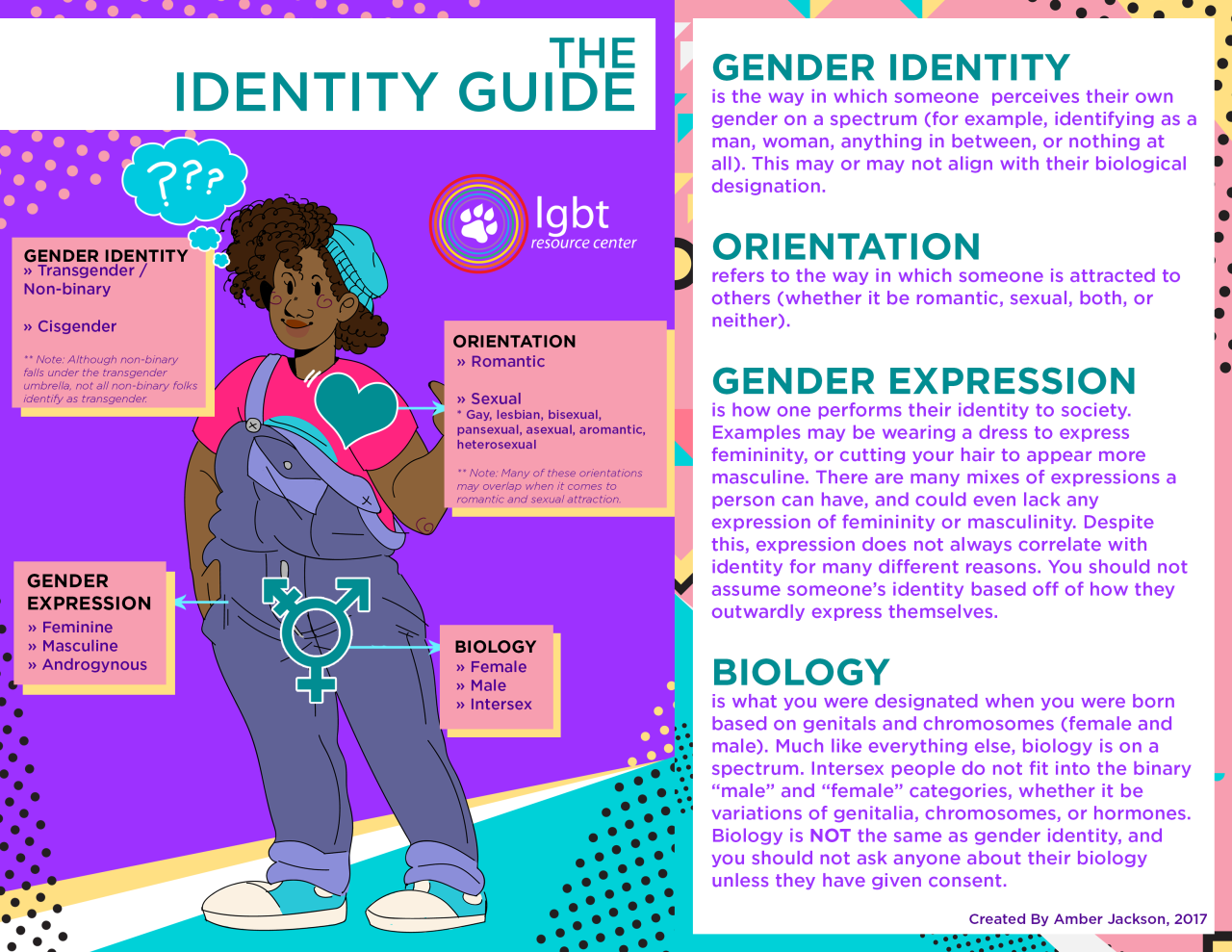
How Junk Science Hurts Trans Kids
How junk science is being used against trans kids takes center stage in a debate that’s affecting the lives of countless young people. This harmful trend is fueled by misinformation and political agendas, leading to a dangerous situation where evidence-based care is under attack.
The misuse of science is often used to justify discriminatory practices against transgender youth, with claims that gender-affirming care is harmful or experimental. This is a gross misrepresentation of the overwhelming consensus among medical and psychological associations, who overwhelmingly support gender-affirming care as a safe and effective treatment for transgender youth.
Defining Junk Science

The debate surrounding transgender youth often features arguments based on what is known as “junk science.” This term refers to scientific claims that are presented as legitimate but lack a solid foundation in scientific evidence and methodology. Junk science can be misleading and harmful, particularly when used to justify policies or decisions that impact individuals’ health and well-being.
Characteristics of Junk Science in Healthcare and Public Policy
Junk science often exhibits specific characteristics that distinguish it from legitimate scientific inquiry. Here are some key indicators:
- Lack of Rigorous Methodology:Junk science often relies on poorly designed studies, small sample sizes, or biased data collection methods. These flaws make it difficult to draw reliable conclusions.
- Selective Use of Evidence:Junk science frequently cherry-picks data that supports a predetermined conclusion while ignoring contradictory evidence. This selective presentation creates a distorted picture of the scientific understanding.
- Oversimplification of Complex Issues:Junk science often reduces complex medical and social issues to simplistic explanations, ignoring the nuanced nature of human health and development.
- Appeal to Emotion over Evidence:Junk science arguments often rely on emotional appeals, personal anecdotes, or fear-mongering tactics rather than presenting objective evidence.
- Lack of Peer Review and Replication:Legitimate scientific research undergoes peer review and replication to ensure its validity. Junk science often avoids these crucial steps, making it difficult to assess its reliability.
Common Fallacies Used in Junk Science Arguments
Junk science arguments frequently employ logical fallacies to mislead and persuade. Here are some examples:
- Appeal to Authority:This fallacy involves citing an unqualified or biased source as an authority on the topic, often without providing evidence to support their claims.
- False Dichotomy:This fallacy presents only two options, often extreme, and suggests that choosing one option is the only way to avoid the other. It ignores the possibility of alternative perspectives or solutions.
- Correlation vs. Causation:This fallacy assumes that because two things occur together, one must cause the other. It fails to consider other potential factors or explanations for the observed relationship.
- Straw Man Argument:This fallacy misrepresents an opponent’s position to make it easier to attack. It distorts the original argument to create a weaker version that is easier to refute.
Misrepresentation of Scientific Consensus
In the context of transgender youth, scientific consensus on gender identity and its implications for health and well-being has been misrepresented or ignored in discussions about healthcare policies. For example, the American Academy of Pediatrics (AAP) and the American Medical Association (AMA) have issued statements supporting the rights of transgender youth to receive gender-affirming care, but these statements have been mischaracterized or dismissed by some groups.
Misinformation and its Impact

The spread of misinformation about transgender youth has become a serious problem, fueled by online platforms and social media. This misinformation not only distorts the understanding of gender identity and its implications but also has detrimental effects on the well-being of transgender children and their families.
It’s heartbreaking to see how junk science is used to deny trans kids the care they need. The fight for their rights is crucial, and sometimes a little distraction is needed. If you’re looking for a distraction, the new Vivo X80 series launched in India, and you can check out all the offers and price variants here.
It’s important to remember that even while we celebrate advancements in technology, the fight against misinformation and prejudice against trans kids continues.
The Role of Social Media and Online Platforms
Social media platforms and online forums have become breeding grounds for misinformation, often disseminated through sensationalized headlines, biased narratives, and misleading content. The rapid spread of information online, coupled with the lack of robust fact-checking mechanisms, allows misinformation to quickly reach a wide audience.
It’s heartbreaking to see how “junk science” is being weaponized against trans kids, often by those who should be protecting them. It’s crucial to remember that education is a powerful tool for change, and building strong relationships with instructional coaches can be vital in creating a more inclusive learning environment for all students.
Read more about how to build relationships with instructional coaches and how they can help us combat the spread of misinformation that harms vulnerable children.
- Echo Chambers and Filter Bubbles:Algorithms on social media platforms often reinforce existing beliefs by showing users content that aligns with their pre-existing views, creating echo chambers and filter bubbles where misinformation can thrive unchallenged.
- Lack of Accountability:Online platforms often lack mechanisms to hold individuals accountable for spreading misinformation. This lack of accountability encourages the spread of harmful content without consequences.
- Viral Nature of Misinformation:Misinformation can spread rapidly through social media, particularly when it is presented in a shocking or emotionally charged manner. This viral nature makes it difficult to counter with accurate information.
Examples of Misleading Claims and Distorted Information
Misinformation about transgender youth often takes the form of misleading claims and distorted information that aims to demonize gender-affirming care and create fear and prejudice.
- Claiming that gender-affirming care leads to regret:This claim is often based on outdated studies and ignores the overwhelming evidence that gender-affirming care improves mental health and well-being for transgender individuals.
- Misrepresenting the role of hormones in gender transition:Some misinformation suggests that hormones cause irreversible changes or have harmful side effects, ignoring the fact that hormone therapy is carefully monitored and tailored to individual needs.
- Suggesting that transgender youth are being pressured into transitioning:This claim is often used to discredit the experiences of transgender youth and their families, ignoring the fact that transgender individuals are the best experts on their own identities.
Psychological Impact of Misinformation, How junk science is being used against trans kids
The psychological impact of misinformation on transgender youth and their families can be significant.
- Increased Anxiety and Depression:Exposure to misinformation can lead to increased anxiety and depression among transgender youth, as they may feel pressured to conform to societal expectations or fear being ostracized.
- Social Isolation and Stigma:Misinformation can contribute to social isolation and stigma, making transgender youth feel like they do not belong or are not accepted.
- Family Conflict:Misinformation can create conflict within families, as parents may struggle to understand their child’s identity and the best ways to support them.
The Politicization of Healthcare: How Junk Science Is Being Used Against Trans Kids
The debate surrounding transgender healthcare has become deeply politicized, with political agendas influencing the discourse and shaping public opinion. This politicization has led to the use of misinformation and the restriction of access to gender-affirming care for transgender youth.
The Influence of Political Agendas
Political agendas have significantly influenced the debate around transgender healthcare, often framing it as a cultural or moral issue rather than a medical one. This politicization has led to the use of inflammatory rhetoric and the spread of misinformation, further fueling the debate.
Instances of Restricting Access to Gender-Affirming Care
Several instances demonstrate how political rhetoric has been used to restrict access to gender-affirming care.
- Legislative Restrictions:In several states, legislation has been introduced and passed to restrict access to gender-affirming care for minors, including puberty blockers, hormone therapy, and gender-affirming surgeries. These laws often cite concerns about the safety and efficacy of these treatments, despite overwhelming scientific consensus supporting their use.
- Public Discourse:Political figures and media outlets have often used inflammatory language to demonize transgender individuals and their families, portraying them as a threat to society. This rhetoric has created a climate of fear and prejudice, making it more difficult for transgender youth to access the care they need.
It’s disheartening to see how junk science is being used to attack trans kids, often fueled by fear and misinformation. The same kind of harmful rhetoric seems to be present in discussions around childcare initiatives, where families are asked to shoulder a disproportionate burden, as highlighted by Meghan Markle in her recent article on the new child care initiative.
We need to remember that supporting trans kids and creating equitable access to childcare are both about building a more just and compassionate society, and that starts with challenging the harmful narratives and demanding better solutions.
- Funding Cuts:In some cases, political agendas have led to funding cuts for organizations that provide transgender healthcare services. This has made it more challenging for transgender individuals to access care, particularly in underserved communities.
Arguments for and Against Gender-Affirming Care
Proponents of gender-affirming care argue that it is essential for the well-being of transgender individuals, particularly youth. They cite the following reasons:
- Improved Mental Health:Studies have shown that gender-affirming care can significantly improve mental health outcomes for transgender individuals, reducing rates of depression, anxiety, and suicide attempts.
- Reduced Gender Dysphoria:Gender-affirming care helps alleviate gender dysphoria, the distress that can arise from a mismatch between a person’s gender identity and their assigned sex at birth.
- Improved Quality of Life:Gender-affirming care allows transgender individuals to live authentically and experience a higher quality of life.
Opponents of gender-affirming care often argue that:
- It is harmful to children:They claim that gender-affirming care can lead to irreversible changes that may have long-term negative consequences. However, this claim is not supported by scientific evidence.
- It is a form of “social contagion”:They argue that gender-affirming care is a trend that is influencing young people to identify as transgender. This argument is based on misinformation and ignores the complex nature of gender identity.
- It is a violation of parental rights:They argue that parents should have the right to make decisions about their children’s medical care, even if it goes against the child’s wishes. However, this argument fails to acknowledge the importance of respecting a child’s autonomy and well-being.
The Importance of Evidence-Based Care
The ethical implications of using junk science to justify discriminatory practices are significant. When inaccurate or misleading information is used to support harmful policies or actions, it undermines the principles of justice, fairness, and human dignity. It can lead to the marginalization and exclusion of vulnerable groups, including transgender youth.
Ethical Implications of Using Junk Science
The use of junk science to justify discriminatory practices against transgender youth raises serious ethical concerns. It can lead to:
- Denial of Access to Necessary Healthcare: Transgender youth require access to gender-affirming care, which includes medical, psychological, and social support. When junk science is used to argue against these services, it can result in the denial of vital care, impacting their physical and mental well-being.
- Increased Stigma and Discrimination: The use of junk science to justify discrimination can perpetuate negative stereotypes and reinforce prejudice against transgender individuals. This can lead to social isolation, bullying, and mental health challenges.
- Erosion of Trust in Healthcare Professionals: When healthcare providers promote or endorse junk science, it can erode public trust in the medical profession. This can make it difficult for transgender youth to access the care they need and seek help when they need it.
- Violation of Human Rights: The right to healthcare, including gender-affirming care, is a fundamental human right. Using junk science to justify the denial of these rights is a violation of human dignity and ethical principles.
Consensus Among Medical and Psychological Associations
It is crucial to understand that the vast majority of medical and psychological associations support gender-affirming care for transgender youth. The following table highlights this consensus:
| Organization | Position on Gender-Affirming Care |
|---|---|
| American Academy of Pediatrics (AAP) | Supports gender-affirming care, including hormone therapy and surgery, for transgender youth. |
| American Medical Association (AMA) | Opposes discrimination against transgender individuals and supports access to gender-affirming care. |
| American Psychological Association (APA) | Recognizes gender identity as a fundamental aspect of human identity and supports gender-affirming care. |
| World Professional Association for Transgender Health (WPATH) | Provides standards of care for transgender individuals, including guidelines for gender-affirming care. |
Reputable Sources for Information
For accurate and evidence-based information about transgender youth and their healthcare needs, consult these reputable sources:
- American Academy of Pediatrics (AAP): Provides resources and guidelines for healthcare providers and families on transgender youth care.
- American Medical Association (AMA): Offers information on transgender health issues and advocates for equal access to healthcare.
- American Psychological Association (APA): Provides research and resources on gender identity, sexual orientation, and mental health.
- World Professional Association for Transgender Health (WPATH): Sets standards of care for transgender individuals and offers guidelines for healthcare providers.
- The Trevor Project: Provides crisis intervention and suicide prevention services for LGBTQ+ youth.
- Human Rights Campaign (HRC): Advocates for LGBTQ+ equality and provides information on transgender rights.
Counteracting Misinformation
The spread of misinformation about transgender youth can have devastating consequences, leading to discrimination, prejudice, and even violence. It’s crucial to actively combat these harmful narratives and promote accurate information. By understanding the tactics used to spread misinformation and equipping ourselves with effective countermeasures, we can create a more inclusive and supportive environment for transgender youth.
Identifying and Addressing Misinformation
It’s important to recognize the tactics often employed to spread misinformation. This can involve cherry-picking data, distorting facts, appealing to emotions, and using misleading language. To effectively counter these tactics, we need to:
- Fact-check information: Before sharing any information, especially if it seems sensational or emotionally charged, verify its accuracy through reputable sources like medical organizations, academic institutions, and fact-checking websites.
- Identify the source: Pay attention to the source of the information. Is it a credible and reliable organization, or is it a biased or questionable website? Be wary of information from sources with a known agenda or history of spreading misinformation.
- Look for evidence: Ask for evidence to support claims. Don’t accept assertions without supporting data or research. Be especially critical of anecdotal evidence, which can be misleading and doesn’t represent the full picture.
- Be aware of biases: Recognize that everyone has biases, including ourselves. Be mindful of your own biases and how they might influence your interpretation of information. Be open to different perspectives and consider information from multiple sources.
Engaging in Constructive Dialogue
Engaging in respectful and productive conversations about transgender youth is crucial to counter harmful stereotypes. Here are some strategies for fostering constructive dialogue:
- Listen actively: Pay attention to what others are saying, and try to understand their perspective, even if you disagree. Ask clarifying questions to ensure you understand their point of view.
- Focus on shared values: Emphasize common ground and shared values, such as respect for individual rights, equality, and well-being. This can help bridge differences and create a more productive conversation.
- Use evidence-based arguments: Support your points with credible evidence and research. This helps establish a foundation for a reasoned and informed discussion.
- Avoid personal attacks: Stick to the issues and avoid attacking individuals or their character. Focus on respectful and constructive dialogue, even when you disagree.
- Be willing to learn: Be open to changing your mind based on new information and perspectives. This demonstrates a willingness to engage in a genuine dialogue and learn from others.
Conclusion

It’s crucial to remember that the well-being of transgender youth is paramount. We must actively combat misinformation and promote accurate information about gender identity and the vital role of evidence-based care. By supporting transgender youth and advocating for their rights, we can create a world where they feel safe, supported, and free to live authentically.






